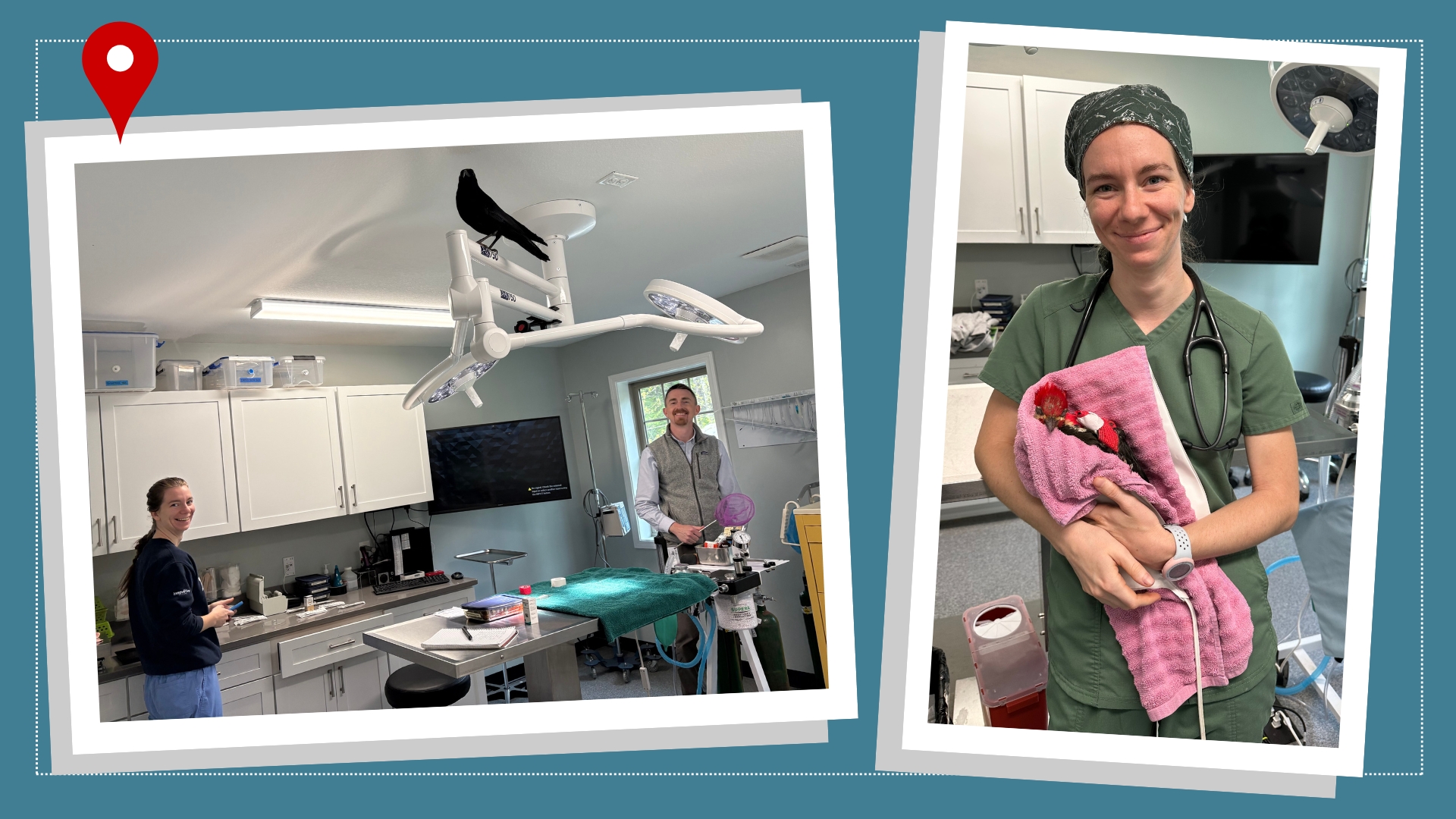A Coat of Confidence, Care and Compassion: NC State DVM Class of 2026 Receives White Coats
The White Coat ceremony marks the end of our third-year students’ pre-clinical studies and their transition into their fourth and final year of education: their clinical year.

Blake Donahue took a knee on the stage as his oldest son, Tobias, held open each arm of his father’s white coat. Donahue struggled to hold back tears as he pulled his son close for a tight hug, reveling in the experience. As he got up, he offered his hand to his son and they proudly walked off the stage together.
This was just one of the touching moments that marked the annual NC State College of Veterinary Medicine’s White Coat Ceremony on March 29.
This event is a ceremonious transition of a veterinary student’s schooling, marking the completion of their pre-clinical studies and induction into their fourth and final year of veterinary college: clinical rotations.
The white coat represents much more than this, though. It stands as a significant symbol of professionalism, trust, confidence, compassion, care and the ethical practice of veterinary medicine.
The White Coat Ceremony gallery with each individual student’s pictures is available here.
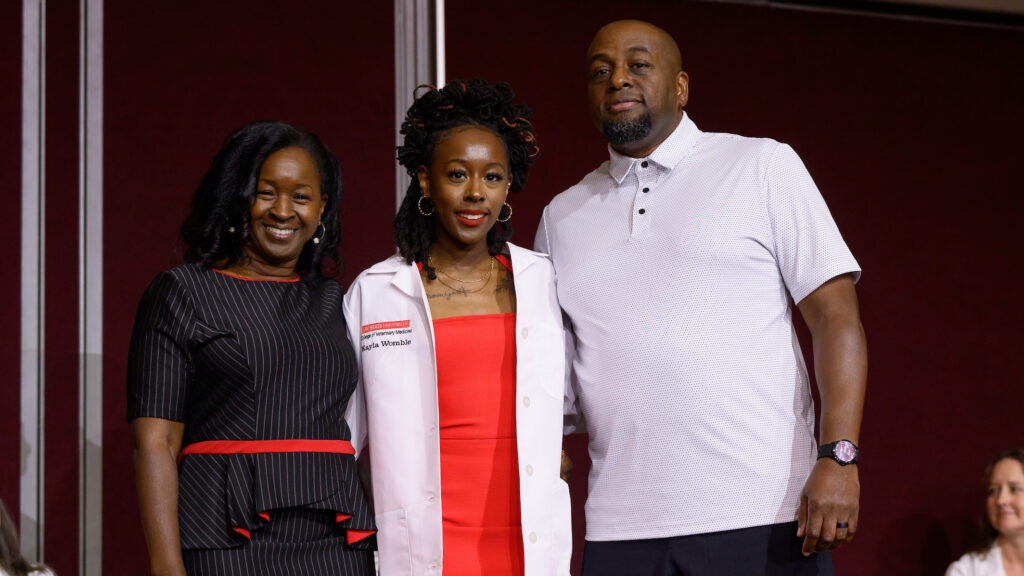
Hundreds gathered at NC State University’s McKimmon Center to celebrate this pivotal milestone in the DVM Class of 2026’s veterinary careers. Students were accompanied on stage by the one to two people they chose to “coat them” for the very first time. These significant supporters were often parents, siblings or close friends. For third-year student Kayla Womble, her parents were the obvious choice.
“Their support has never wavered, and I can always count on them and fall back on them for any- and everything,” Womble said.
Many students chose mentors who guided or encouraged their studies, ultimately making a tremendous impact on who they are and where they’ll go. This was the case for Sean Hubbard, who asked Dr. Tara Harrison, an associate professor of exotic animal medicine, to bestow his white coat.
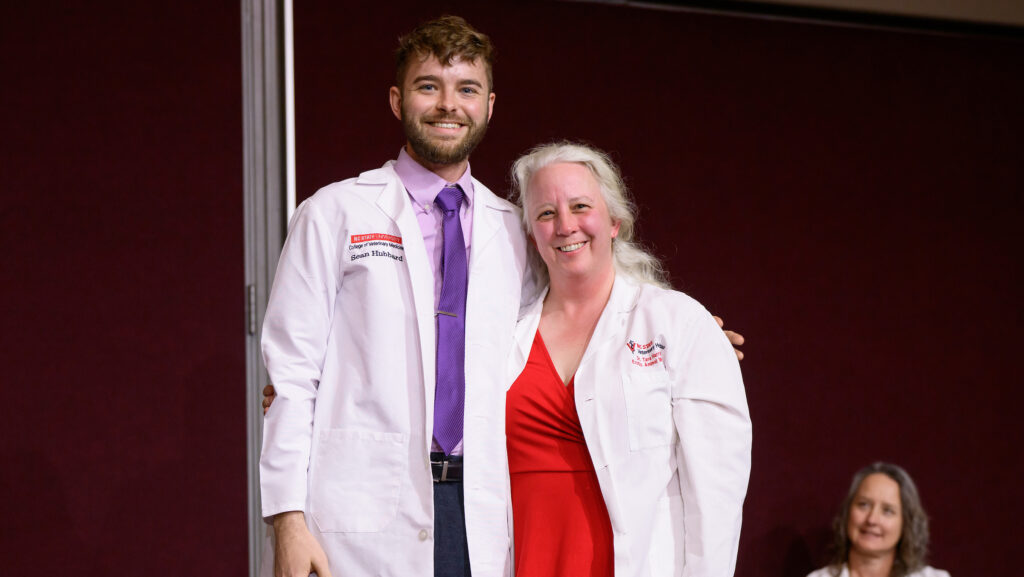
“When I came to vet school, I fell in love with the Carnivore Conservation Crew and the mission of housing, breeding and doing medical care for red wolves on campus, and through that I met Dr. Harrison,” Hubbard recalled. “She’s a professor, she’s a zoo veterinarian, she wears all kinds of hats, and I really look up to her and her mentorship that I’ve received over the last couple of years.”
Dr. Harrison smiled and joked, “It’s the cleanest his coat’s ever going to be, and I was the one who got to put it on!”
“It was an immense honor, and Sean’s just been one of the greatest members of our Carnivore Conservation Crew,” she continued. “As the president, he’s done a fantastic job and has really helped advance the program. I couldn’t do it without him, so I’m glad to share this moment with him.”
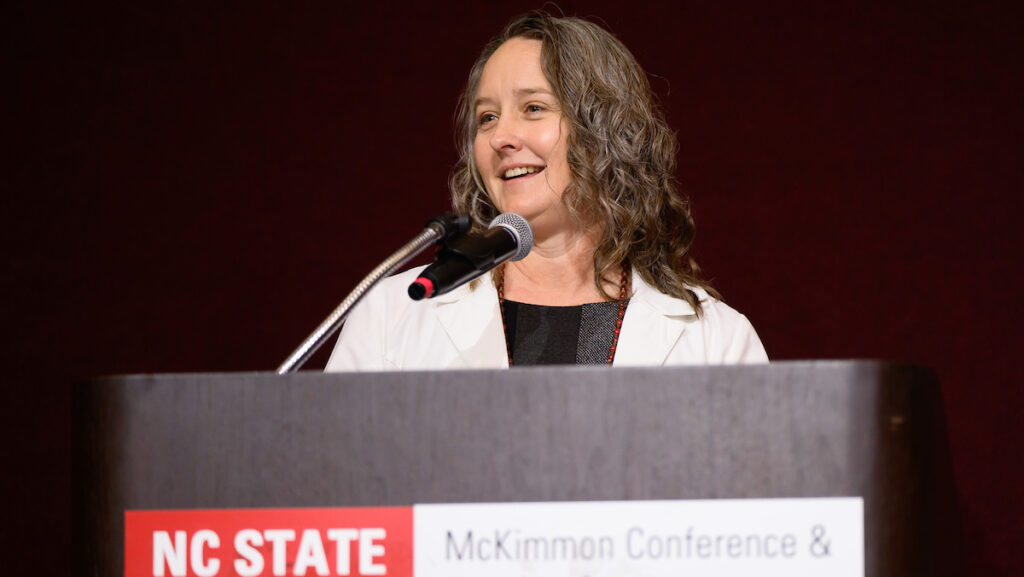
As the students sat in a sea of pristine white, pressed cotton overcoats, distinguished speakers approached the lectern to offer their advice and encouragement.
“You’re about to start treating patients, which is a lifelong dream for the vast majority of you,” said Dr. Shannon Bass, current president of the North Carolina Veterinary Medical Association. “In difficult moments, remember your dream and the steps by which it was realized.”
College dean Dr. Kate Meurs emphasized that as the trainees don the coats to enter their clinical year, so too do they shoulder the responsibility of advocating for patient, herd and population health and supporting their fellow clinicians and scientists.
“This is a great responsibility,” Meurs said, “but we know that you are more than ready.”
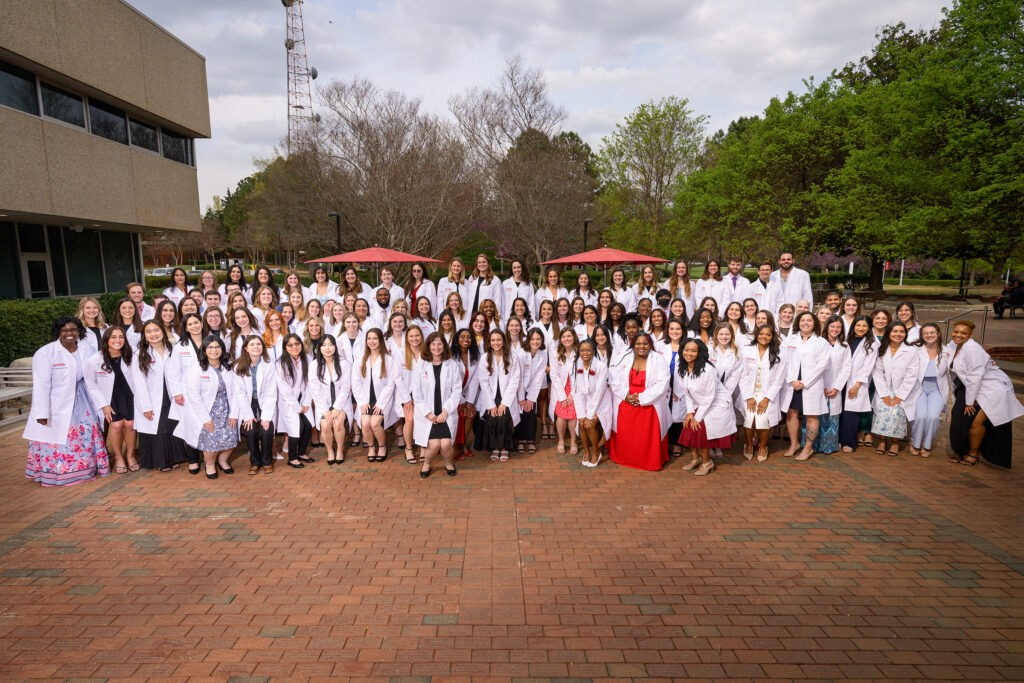
- Categories:
